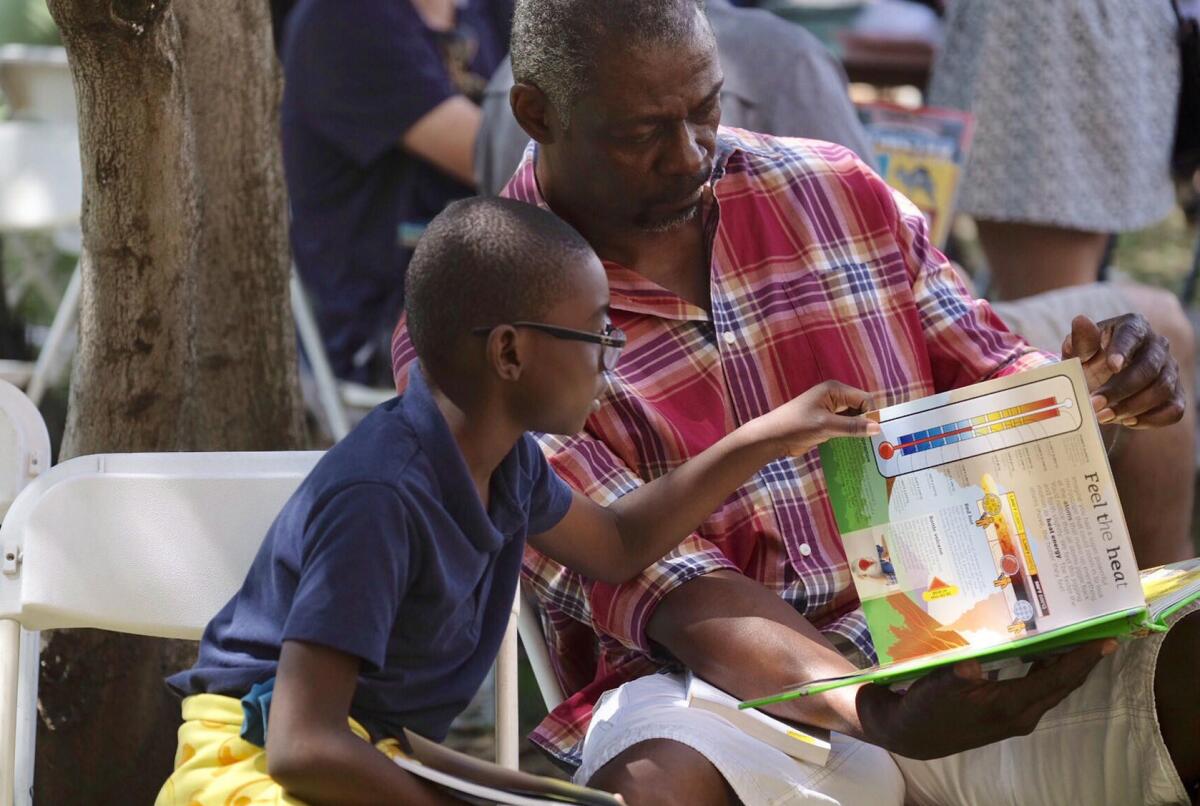An educator’s tips for online learning

- Share via
Devora Noboa is a parent-educator for Ready, Set, Read! and a preschool teacher at Hobart Early Education Center, with 25 years of experience in education. She is also a mother of two boys, ages 6 and 11. Ready, Set, Read spoke with her about navigating remote learning.
Ready, Set, Read: What can parents do to create a successful learning environment at home?
Noboa: Whenever possible, have a designated study area free of distraction with the proper supplies and equipment. Having children work in the same area helps instill routine and prepare them for learning. Children should be dressed, not in their pajamas. The television should be turned off to help keep them focused on their lessons. Children should be reminded that “this is my class time with my teacher.”
We teachers need proper lighting so children can see us on their screen, and children need proper lighting so we can see them, as well. As a teacher, I tell parents what supplies they will need. I always advise that your child has a notebook, crayons, pencil and their fully charged device. I also recommend a dry erase board — a plastic plate is a good substitute.
What are activities parents can do with their younger children to complement their distance learning?
We as educators need to get our students’ parents involved and support the learning Look around and try to reproduce what they learned, i.e. create counting collections at home and have your child share with you about it. Parents, ask your teacher how you can support your children at home. Ask your child open-ended questions. Have conversations with your children after their Zooms. Whether you know the answer or not, say, “Let’s figure it out” and research the answer together.
Teachers should be sending weekly lesson plans, so, parents, stay connected.
How can parents leverage online platforms as alternative ways for children to socially connect with other children?
The best way for children to use virtual tools such as Zoom is for parents to get comfortable with the online programs. I tell parents that Zoom is similar to FaceTime, and I offer training on all of the online programs I will be using.
Once parents are comfortable with the online programs, they can reach out to other parents to set up “virtual play dates.” I have found it’s helpful to coordinate that the children play a game together like Battleship, Legos or Pictionary to help break the ice.
Aside from the online learning programs I use with my students, I offer online resources for additional learning, which include ABC Mouse, Starfall, PBS Kids and PBS Learning Media, Motion-Tutor.com and Raz Kids. Scholastic, Storyline Online, Epic and Vooks are online resources that focus on literacy and online books. For older children, National Geographic Kids, Zoos and Wildlife Centers, America’s Test Kitchen, BrainPop, GoNoodle, Houghton Mifflin Harcourt, Izzit, Minecraft and more.
What are everyday activities children can do to add to their EQ skills and life skills?
Parents can use this time to get their children involved around the house. Helping with simple repairs, cleaning, laundry, chores around the house – these are life skills!
You can incentivize chores with a weekly movie night. Disconnecting from the devices at the end of the day is key. Use a timer to regulate their time in front of a screen outside of school time. I also recommend creating family rituals such as weekly movie night or game night, cooking or walking together on a regular basis.
What are some disadvantages or challenges of virtual learning?
The social-emotional impact is real, and we don’t even know what the full impact will be. Only children at home who do not have that connection with friends are most impacted. Low-income families that don’t have the proper supplies to help them. Families that don’t have internet or can’t access tech support, parents who can’t read and/or write instructions are most impacted by this online learning environment. I have two families in this situation. Even when there is tech support, there are cultural barriers and stigmas to accessing them.
What are some benefits of virtual learning?
Children are becoming more resilient and flexible by virtue of having to pivot to online learning.
Children have to be more mature when their parents are working from home, to be quiet and respectful of the shared space. We are finding that children are needing to become more independent during this time. Children, especially younger children, love to be the authority. Say to your child, “You’re responsible for researching this or learning this and then you are going to teach me how to do it.” Many children are helping their parents learn the online software programs.
From the stories parents have shared, I find that parents are spending more time with their children and doing amazing things with their children. For older children, I recommend giving them a little space but still staying involved and interested and continuing to ask questions.
This interview has been edited for length and clarity.
This article is part of A Guide to Storytime, L.A. Times Reading by 9’s 2020 parent reading guide. It was produced in partnership with local literacy nonprofit Ready, Set, Read! Check out the rest of the project here.